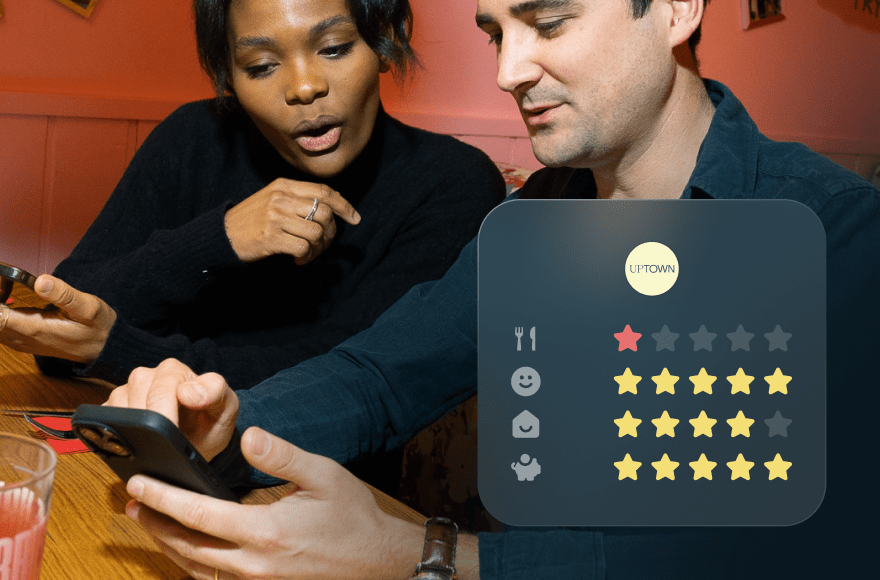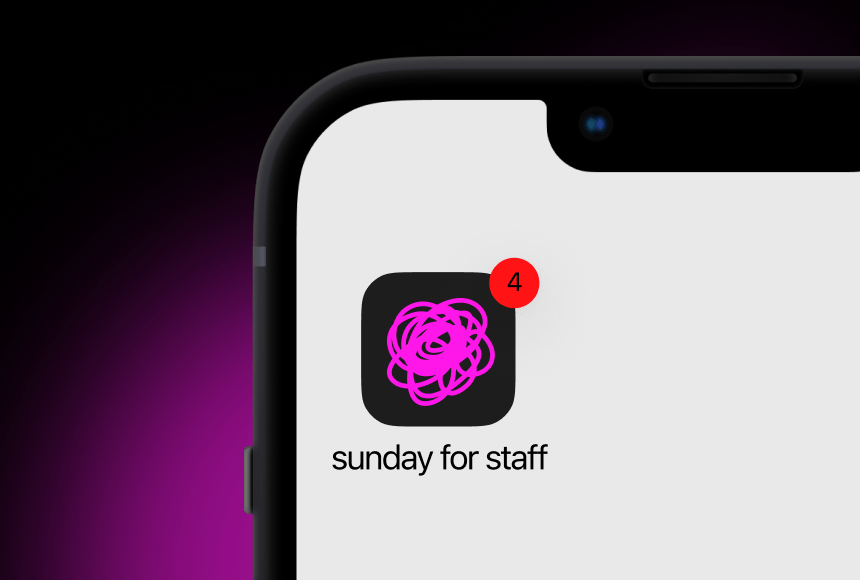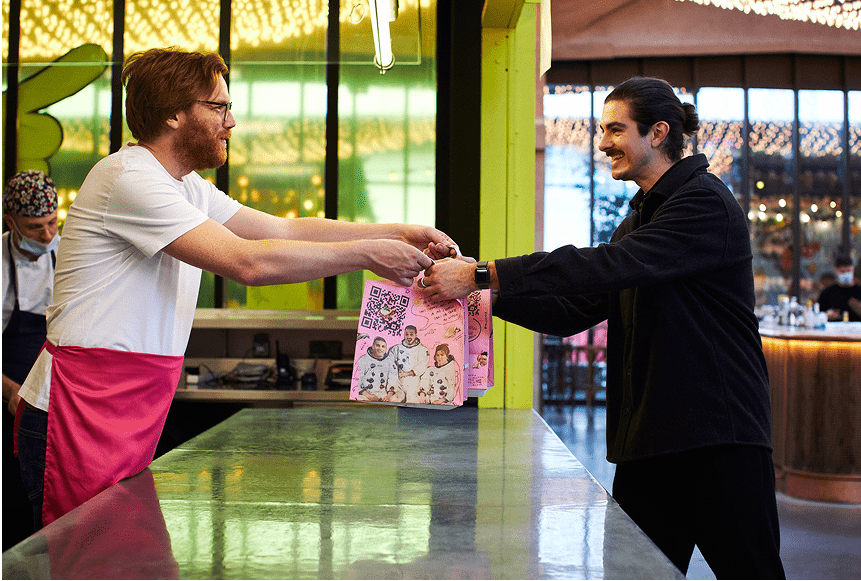
Three Forward-Thinking Tools to Lead Your Restaurant Team with Confidence
The Evolving Landscape of Restaurant Staff Management
Picture this: It’s Saturday night, your dining room is buzzing, orders are piling up, and your servers are juggling tables like expert performers. In the midst of the clatter of pans and the hum of conversation, you—like most restaurant owners—want to ensure your team runs smoothly without having to hover over anyone’s shoulder. After all, your staff are capable professionals, not short-order cooks who need constant supervision.
Yet striking the right balance between supportive leadership and micromanagement isn’t always as simple as whipping up a quick dessert special. It’s easy to slip into hands-on control mode when business picks up. The good news? With the right technology, you can help staff excel and keep a keen eye on daily performance—while still affording everyone the space to breathe, innovate, and step up on their own.
In this article, we’ll explore three key technological upgrades that can help you effectively manage your restaurant staff without getting lost in the exhausting details. These are direct solutions that streamline scheduling, communication, and payment or tipping processes, leaving you free to nurture your team’s development and future growth.
The payoff? Less stressed managers, more motivated staff, and a better experience for your guests. Let’s dive in.
1. Smarter Scheduling and Shift Management Software
We’ve all had the scheduling puzzle drive us up the wall at one time or another. It’s often a patchwork of scribbled rosters, last-minute call-offs, and frantic phone calls at 6 a.m. on a busy weekend. But scheduling doesn’t have to be this chaotic. As an owner, you need a clear overview of who’s available, who’s excelled at which tasks, and how to anticipate surges in demand. Modern, cloud-based shift management software is designed specifically for that.
Instead of a basic whiteboard or a static spreadsheet, imagine an interactive platform that updates in real time, balancing staff preferences, availability, and labour cost forecasts. Whether you’re running a small bistro or a nationwide chain of brasseries, these tools can handle the complexities of staff rotation for you. Let’s break down the benefits:
- Real-Time Updates: Many scheduling tools let staff swap shifts (with manager approval, of course) at the tap of a finger. No more chasing people by phone or scribbling on that staff noticeboard in the kitchen.
- Automated Alerts: Whenever there’s a gap in staffing, the tool sends out notifications or push alerts. You and your team can fill the gap earlier, saving stress and last-minute scrambles.
- Labour Cost Management: By tracking total hours and forecasted sales, you can align your staffing with actual demand. If you spot an unexpected dip in reservations for a specific night, you can reduce staffing accordingly—and vice versa for an upcoming big event.
- Holiday and Staff Leave Management: The more advanced platforms let employees request and schedule holiday directly, freeing you from the minor headache of chasing holiday forms and missed messages.
- Clearer Accountability: You end up with an irrefutable record of who worked which shift, which helps avoid disputes over missed hours or pay discrepancies.
According to CIPD, effective team structure and scheduling can play a significant role in improving staff retention. When employees feel that their time off requests and shift preferences are respected, they’re more likely to stick around long term. This also nurtures a sense of trust—your staff see that you’ve got their backs, and in return, they’ll have yours on the busiest nights.
Case in Point: The Sizzling Spoon’s Sunday Rush
Consider The Sizzling Spoon, a fictional but representative neighbourhood gastropub in Bristol. Fridays and Saturdays used to be a scheduling mess—too many staff on some nights, too few on others. The manager spent hours texting or emailing last-minute requests to fill holes in the rota.
Once they adopted a cloud-based shift management solution, they instantly saw tangible benefits. Staff could volunteer to take extra shifts if they felt up to it, and the software would automatically track how many hours they had accumulated that week. It liberated the manager from frantic phone calls, reduced staff burnout, and created a fairer system where no single team member felt “dumped on” more than another.
With some of these tools, employees can also signal their preferred shift times, highlight days they’re unavailable, and receive a confirmation the moment their schedule is finalised. Rather than you having to micromanage attendance on a daily basis, the technology acts like a conductor, ensuring the entire orchestra knows its cues.
2. Real-Time Communication and Collaboration Platforms
Next, let’s talk communication. Keeping your team in sync often means the difference between a smooth service and a meltdown at the pass. But rattling off group texts, yelling instructions from the pass, or pinning up note-after-note in the break room can lead to confusion. Modern communication platforms unite staff messages, important announcements, and even training modules in one neat, easily accessible hub.
Platforms specifically designed for hospitality often mirror popular professional messaging apps. Instead of a chaotic chain of phone numbers, you’ll have dedicated “channels” for certain departments (kitchen, front of house, bartenders) or for specific events, announcements, or promotions. Here’s why you might consider them:
- Transparent Tasking: Lists and to-dos can be assigned in an app, letting everyone know exactly who’s handling what, and whether tasks are completed on time.
- Instant Feedback Loops: Quick communication allows front of house to inform the kitchen of special dietary requests, last-minute changes, or sold-out items without leaving the floor or interrupting service unnecessarily.
- Reference Library: Some platforms store “important documents” like the cocktail recipe list or step-by-step instructions for new menu items. No more rummaging through scattered notes or sticky tape on the kitchen fridge.
- Scalable Structure: If you have multiple locations or a mix of permanent and freelance staff, you can configure different access levels so everyone gets the right information, no more or less.
- Empowering Staff Autonomy: When your team has the information they need at their fingertips, they’re far less reliant on you to answer everyday queries. This fosters independence and can cut back on that dreaded ‘micromanagement’ feeling.
Communication platforms have proven beneficial across various sectors, but they’re a godsend for hospitality. They offer a space where you can gauge the vibe of your team and jump in only when necessary. You don’t have to creep around the dining room to check if a staff member missed something; you can follow the chat or tasks in real time. This sense of shared space helps your people feel that they own their roles—because they do.
An Example from The Sizzling Spoon
After tackling their scheduling chaos, The Sizzling Spoon also launched a restaurant-wide messaging platform. Management created channels for each team—kitchen, bar, front of house—and a separate “All Staff” channel. Their bartenders started sharing tips for the new signature cocktail, the head chef posted daily specials and allergen info, and the front of house team gave a heads-up if a large group walked in.
Everything stayed organised, searchable, and easy to track, all without a single frantic phone call. The manager discovered that by gently guiding chat conversations—asking open questions and providing positive feedback—there was no need to pop in every five minutes with a reminder. The staff learned to solve issues together, quickly and efficiently.
The reduction in constant “check-ins” not only freed up time but built mutual trust. The manager could see what was happening, but more importantly, employees helped each other out. Everyone felt more in control, so even during the dinner rush, they projected calm rather than chaos.
3. Integrated Payment and Feedback Solutions
In a competitive dining landscape, harnessing technology at the end of the meal can also help you manage staff dynamics without micromanaging. At first, you might not see the link between payment solutions and staff management—but hear me out.
A modern, integrated payment system doesn’t just complete the transaction. It can simplify tip sharing, gather feedback from guests in real time, and give you data-based insights on performance metrics, all while reducing the dreaded “waiting for the card reader” scenario. It can also reduce labour around payment administration, freeing up your time to focus on higher-level strategy.
Here’s what it entails:
- QR-Code Payments: Platforms like sunday are known to let diners pay by scanning a QR code. No waiting for the card payment terminal; as soon as your guests finish dessert, they can settle up in minutes. This cuts down how many times a server has to check in, letting them offer guests a more relaxed experience.
- Automatic Tip Distribution: When tips are collected digitally, you have a real-time overview of how much is being tipped, which servers are generating higher tip averages, and the total amounts to be distributed. Clear, structured disbursement reduces tension and fosters a sense of fairness.
- Guest Feedback Loop: By prompting diners to leave a quick review (for instance, on Google) right after they pay, you get a snapshot of a table’s satisfaction—immediately. Your staff can learn from constructive feedback. You, as the manager, learn who’s consistently delivering an outstanding experience. Everyone benefits.
- Data-Driven Insights: Some payment platforms package your sales and tip data so you can see if a particular staff member is consistently upselling desserts or cocktails, or if your new lunch specials are booming. Rather than looking over your staff’s shoulder, you rely on transparent numbers to guide your coaching and rewards.
- Reduced Payment Friction: A streamlined payment process lowers stress for staff who otherwise juggle multiple tables. It also increases the likelihood of positive reviews—guests often remember the last part of their experience most vividly.
According to UKHospitality, the adoption of digital payment systems continues to trend upwards, and for good reason. Fewer delays at the end of the meal equals happier guests, which translates to higher tips. In turn, your staff feel more satisfied and valued. This chain reaction—smooth checkouts leading to content guests leading to better tips—can actively foster a healthier relationship between you and your team.
A Glimpse into The Sizzling Spoon’s Payment Setup
Having upgraded their scheduling and added a messaging app, The Sizzling Spoon decided to incorporate an integrated payment system to manage all the friction around final bills and tip allocation. They introduced a QR-code payment option on each table, letting diners split the bill easily or tip with one click.
Within days, staff noticed an uptick in average tip amounts—in part because customers found the process more comfortable than trying to wave down a server. The manager no longer had to double-check how tips were recorded for each shift or negotiate awkward tip-splitting debates. Meanwhile, the built-in review prompt inspired diners who had a stellar experience to quickly drop a five-star nod on Google before they even stood up to put on their coats.
Beyond the immediate—though satisfying—boost in tips, the solution yielded valuable insight for the manager. An in-app dashboard showed them consistent patterns: by correlating high-spend tables with top-notch customer service, they identified staff members who excelled at upselling. Instead of creeping around the dining room to see who was better at recommending the house specials, the manager used data to offer support, reward top performers, and gently coach those who needed more training.
How Technology Fosters Autonomy and Team Spirit
All these upgrades aren’t about turning your restaurant into a faceless, gadget-run machine. Far from it. By giving your people consistent, reliable systems to rely on, you release the tension and friction that often lead to micromanagement. Think of these tools like reliable sous chefs, quietly handling essential tasks, letting you concentrate on the artistry of running a warm, welcoming establishment.
Scheduling software ensures that staff are placed in optimally balanced teams, meaning everyone understands their role for the night. Communication apps keep your staff aligned in real time, giving them quick answers and encouraging them to sort out small kinks themselves, rather than waiting for manager intervention. Meanwhile, integrated payment systems help you support, measure, and reward the performance of your team in a fair, data-driven way.
Beyond day-to-day operations, these systems also offer professional development. By establishing a culture of transparency, trust, and ongoing learning, you’re positioning your restaurant as an attractive employer in a competitive labour market. When people talk about a supportive workplace, they’re referencing an environment where structure and flexibility go hand in hand. Technology is the scaffolding that holds up that approach.
Putting the Pieces Together in Your Own Venue
No two restaurants are identical—your local curry house isn’t the same as a three-Michelin-star spot in London. Still, the core challenges remain: balancing staff workloads, keeping everyone in sync, and ensuring top-notch customer experiences. Implementing each of the three upgrades covered here doesn’t have to happen overnight. You might begin with a scheduling solution, see how your team responds, and then roll out a messaging platform to refine the flow of information.
Small steps often produce a bigger impact in the long run than trying to impose one drastic transformation. Start with the area that costs you the most stress—be it repeated scheduling issues or bottlenecks with payment—and introduce the relevant technology. Give your staff time to adapt: share brief, engaging training materials, hold short orientation sessions, and take feedback onboard.
Yes, technology costs money, but think about the return: a genuine reduction in staff turnover, fewer mistakes, and better guest satisfaction. Many restaurants that adopt these solutions see a swift return on investment through decreased labour costs and improved efficiency. Plus, there’s an immeasurable upside in your personal well-being, having a better work-life balance and more headspace to focus on your creative vision.
A Gentle Reminder: Managing Culture, Not Just Tools
While technology can do wonders for organisation and coherence, it’s equally important to nurture a healthy internal culture. Let’s remember these upgrades are tools, not magic wands to fix all your problems without any further input. The individual members of your team are still the heart and soul of your establishment.
Support them by setting an example. Encourage open communication, show gratitude for extra efforts, and remain approachable. Lift up those who show initiative, and gently guide those who need more support. If your staff feel they can come to you with new ideas or operational hiccups, you’re less likely to reach a boiling point where micromanagement feels inevitable.
Frequently Asked Questions (FAQ)
Do I need to hire an IT specialist to implement these technologies?
Not necessarily. Most modern, cloud-based software solutions are designed to be user-friendly and intuitive. You or your manager can set them up by following straightforward online tutorials or scheduling a brief onboarding session with the software’s support team. You won’t need a dedicated IT department to maintain them.
How can I encourage my staff to adopt these new platforms?
Clarity and direct involvement are key. Introduce the changes in a meeting or through a short training workshop, show the benefits (e.g., easier shift swaps), and let staff experiment with the tools. Encourage them to share feedback after a few weeks, and adjust if necessary. Emphasise that the platforms are there to empower them, not to spy on them.
Which KPIs should I track to measure success?
For scheduling tools, look at labour cost percentage and staff satisfaction measurements. For communication platforms, measure response times to important announcements and overall team feedback on clarity of updates. With payment solutions, track average tip amounts, check-in and check-out times, and guest feedback scores. The idea is to gain insight into how each improvement impacts efficiency, revenue, and employee morale.
Is it expensive to integrate a modern payment system?
Costs vary, but many providers, including sunday, have simple pricing structures. Think about your specific needs: do you want QR-Code payments only, tip management, or advanced analytics as well? The convenience for your staff and customers often justifies the monthly or transaction-based cost. If you account for the time your servers save chasing credit card machines, it can more than pay for itself.
Will these tools help me reduce staff turnover?
They can certainly help. Staff retention isn’t just about wages—it’s often about feeling valued, having clarity in roles, and being able to communicate effectively. By creating an organised, supportive environment, you encourage staff to invest in your business for the long haul. Technology helps by streamlining tasks and offering transparency, but remember to complement these tools with genuine human leadership.
Open New Doors with Less Day-to-Day Stress
Restaurant ownership is all about creating memorable experiences. That includes your staff’s daily journey just as much as your guests’. By embracing scheduling software, real-time messaging, and integrated payment solutions, you can eliminate many of the distractions that lead to micromanagement. Instead, you’ll have more time to breathe, think, and craft the ambiance of your place.
It doesn’t matter if your establishment is a tiny café in the countryside or a bustling eatery in Manchester’s city centre—the right tech upgrades can transform the daily grind into a cohesive, rewarding routine. Give your staff the tools to shine, show them you trust their skills, and watch as the entire team delivers an elevated, more consistent dining experience. In the end, that’s the perfect blend of artistry and efficiency in the restaurant business.
Find out more today
Drop us your details below and we’ll reach out within the next 24
Get the full, detailed picture.
sunday elevates your business with insightful data, instant feedback and precise analytics.




